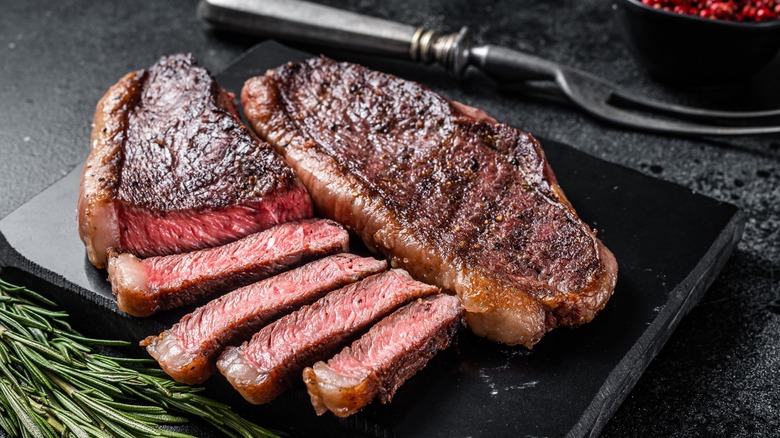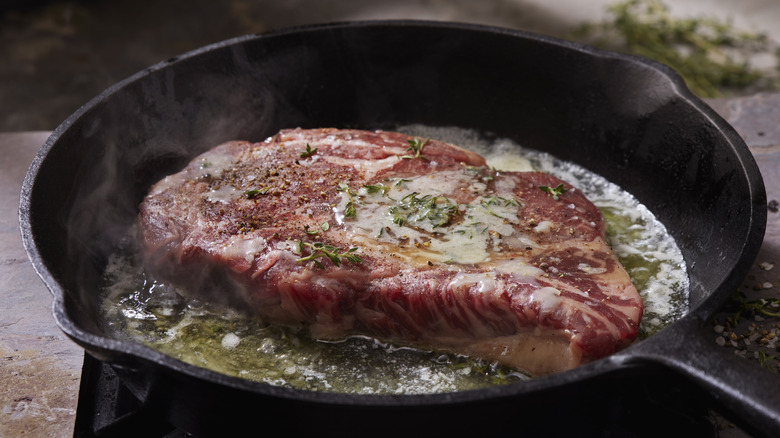The Timing Mistake Home Cooks Make While Searing Steak
When you bring home the most expensive cut of steak you can afford from the local grocery aiming to impress family or friends with a show-stopping dinner, it's time to create a restaurant-worthy feast, and we all know what that requires — a beautifully seared, mouthwatering steak. It calls for nothing less than the most trusted steps to achieving that coveted crispy crust and tender center.
The CEO of Happy Cooking Hospitality, Gabriel Stulman, openly shared his pro tip on Vogue for perfecting your steak. He said, "... the best results are when you get your pan so hot that you see white heat emanating from a dry pan. That's the time to place your steak on the dry skillet and let it sit without touching it, shaking the skillet, or anything. Just let the meat sit there for a few minutes to get the best results."
Unfortunately, most home cooks often focus on selecting the right cut of meat and seasoning it just right while failing to comply with that one crucial rule, which is letting the steak sit on the pan without touching it for a few minutes. This is the timing mistake to avoid lest you end up with a less-than-perfect steak.
Let it sizzle with a more hands-off approach
As a general rule, great searing is achieved when temperatures on the pan are not only high enough but also when the meat gets enough time to absorb that heat and go through the browning process. Once your seasoned cut of steak touches the smoking-hot skillet, it's crucial to leave it undisturbed for a few minutes. While the exact timing will depend on the thickness of the steak, a general guideline is around two to three minutes per side for a medium-rare result. This uninterrupted time is critical for the Maillard reaction to take full effect, leading to a beautifully caramelized crust, delicious flavors, and the classic irresistible aroma of cooked meat.
After the allotted time, gently flip the steak using tongs or a spatula. Again, refrain from moving it or pressing it down with excessive force. Allow the other side to sear for an equal amount of time, maintaining the same patience and hands-off approach.
At this point, if you're wondering, "But what about adding oil or butter to the pan before placing the steak?" you heard it from Gabriel himself; you don't really need to because a dry pan works perfectly. For one, oil on the pan may become more of a nuisance when it begins to splatter and over-smoke at high temperatures. And secondly, if you're cooking steak with marbling, then it's got enough of its own fat to cook in, so no need for any extras.

